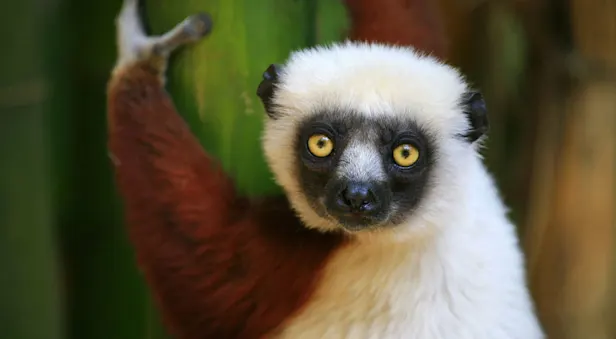
Know Before You Go


Chameleon & Gecko Facts | Madagascar Wildlife Guide
Chameleons
About half the world’s chameleons are unique to Madagascar—currently 67 species have been identified, and new ones are still being discovered. Chameleons are perhaps the most distinctive and specialized of all lizards, perfectly designed for life in the trees. Evolution has done an exquisite job here, modifying almost every bodily feature. A chameleon’s body is laterally flattened, enabling the animal to move easily through tangles of branches and allowing them to absorb heat efficiently in the morning and evening by turning broadside to the sun. This shape provides an imposing profile to deter predators and other chameleons (they are all strictly solitary). An angry or frightened chameleon puffs itself up to look bigger. This ability to inflate themselves with air provides an effective flotation devise—chameleons are good swimmers. Their rough, bumpy skin can change color, allowing many chameleon species to blend in with their surroundings.
It is the chameleon’s bulging eyes that most people notice first, which allow them to see nearly 360 degrees around them. Large and protected by circular eyelids, which cover all but the pupils, the eyes can swivel independently so the reptile can look in two directions at once without needing to move its head. This is extremely useful for an animal that relies on camouflage to avoid predation: it can keep absolutely still but watch out for danger—and food—in all directions. When food is located (usually an insect), both eyes point forward. The chameleon can then judge depth and distance and bring into action its most specialized feature—its tongue. This rests like a primed missile in the chameleon’s mouth before being fired at potential prey. The tongue can extend to a length equal to the animal’s body, and if the aim is good, a sticky, muscular tip clamps onto the victim and seals its fate.
Chameleons are Old World lizards belonging to the Chamaeleonidae family. The species is sexually dimorphic—males are slightly larger, reaching up to 23.5 inches long, and they often have facial ornamentation such as nasal horns on their snout. Chameleons are nonvenomous and feed mainly on insects such as crickets and worms, though they may also eat plant material and small vertebrates, depending on the species. These arboreal reptiles are at home in the trees, gripping branches with their specially adapted feet. They rarely descend to the forest floor, as they become easy targets for predators due to their awkward gait on the ground.
Most chameleons are oviparous, laying clutches of eggs, though some are ovoviviparous, giving birth to live young. A female’s clutch size varies depending on the type of chameleon, and the incubation period of certain species can last more than one year. Hatchlings are left to fend for themselves.
Mossy Leaf-tailed Gecko
Another master of disguise, the mossy leaf-tailed gecko can flatten itself against a lichen-covered branch or tree trunk and virtually disappear.
Photo Credit: Denise Ramsey

































